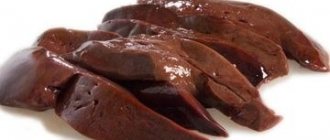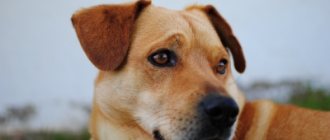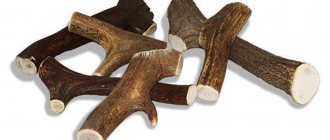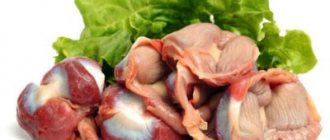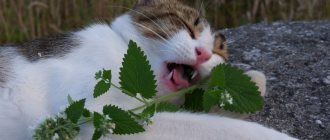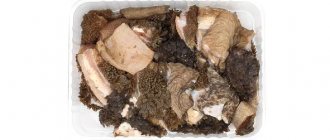At first glance, it seems that the division of food into dog and cat food is arbitrary and more like a marketing ploy. At first glance, this is indeed the case. Both cats and dogs are given a similar set of foods for their diet.
This is due to the natural diet, where 90% of products are identical to each other. But what is good for both with natural nutrition is that there are a number of differences in the composition of dry or wet food.
Feed differences
To find out why you can’t feed cats food for dogs, you need to understand the composition of the product and the characteristics of the effect of nutrients on the animal’s body.
Dry food
There are no significant differences in appearance. The composition is different.
- Dogs need less protein, so these substances are added to food in small quantities, while cats’ bodies cannot live without this component. They slowly digest plant and grain foods, and with an improper diet they suffer from digestive disorders and other diseases.
- Cat food contains a large amount of vitamin A, which is necessary to maintain vision and normal coat condition. In dog products, this component is not enough for the normal functioning of the cat’s body. As a result, the animal becomes weaker, hair falls out, and visual acuity is impaired.
- Taurine is an essential substance for the cat's body. It is simply not available in dog products. Found naturally in meat. Taurine is responsible for the complete digestion of fats, the stability of the nervous system, blood clotting, strong immunity, and excellent heart function.
When using dog food, cats develop problems with their well-being and health, their immunity decreases, and their appearance deteriorates.
Wet food
Canned or liquid food is not intended for regular consumption by animals. Not all important components are present in their composition. In this case, the feeds do not differ much, so they cause less harm if used “incorrectly.” Nothing terrible will happen, but the cat should not be allowed to eat canned dog food regularly.
For puppies
Food products for puppies are available in dry and wet forms. They differ from adult “treats” in the amount of nutritional components. In general, the composition does not change significantly. The recipe is developed taking into account age, breed, and species characteristics. If you give puppy food to cats constantly, the animals begin to undergo biological starvation, which leads to disruption of the functioning of the digestive organs, the development of serious diseases, and fatal pathologies. Puppy food is not suitable for cats.
Proplan for Yorkies
The food was developed by veterinarians and nutritionists of the famous ]Purina[/anchor]. Each recipe was created individually, taking into account the peculiarities of the functioning of the animal’s body. Separately, products are produced for dogs, cats, puppies, and kittens. Despite the fact that the food is of high quality, it is not recommended to use it for other purposes. The reason is all in the same nutritional components, which will not be enough to maintain the normal health of the pet. The cat eats the food with pleasure, it won’t do much harm, but you can’t feed it to it all the time.
Chappie
Well-known products for dogs are of high quality and affordable prices. When buying a large bag of food, the thought involuntarily creeps into your head as to whether you should give it to your cat. Before you do this, you need to remember the following:
- Chappie dog food does not contain taurine. Cats must receive it regularly, and it comes only from the outside; it is not produced by the body itself.
- The calorie content of cat products is much higher due to the presence of fats. Metabolic processes in cats occur faster; the main source of energy is not carbohydrates, but fats. Animals eat little by little, but often. Problems arise when there is a deficiency of fat in the diet.
- Cats require vitamin A, while Chappie dog products contain more zinc and vitamin E.
There is no point in experimenting, especially since the cost of the products is approximately the same. You should not give dry dog food to your cat, and you should also abandon the idea of feeding your pet canned food for other purposes.
It is important to consider the stage of life
There is an organization called the American Association of Feed Control Officials (AAFCO) that closely monitors the pet food industry.
Pet foods that meet AAFCO standards have a label that says “formulated by AAFCO for... (life stage).”
There are three main stages:
- Height
- Care
- All stages of life
Cats' protein, vitamin and nutrient requirements change throughout their lives.
Kittens, which are growing quickly, need more nutrients, and older animals need more protein to maintain muscle strength.
Dog foods that are lower in protein and nutrients are not able to sustain cats over the long term.
If the cat has already eaten, what will happen?
If you feed the purr once, nothing bad will happen. This should not be done regularly. Cats and dogs differ in more than just their appearance. They have different lifestyles, digestive characteristics, metabolic processes, and the need for nutritional components. Cats are obligate predators. Protein is required for the full functioning of all organs and systems. It is found in meat and offal. Vegetable and cereal products are digested very slowly, and fats are the main source of energy. If you regularly feed your purring dog food, after a while a deficiency of proteins, fats, vitamins, and nutritional components will begin.
Is it possible to combine dry and wet nutrition?
A balanced diet for a pet cat may include both dry and wet cat food. The first type of food contains a sufficient amount of nutritional components and minerals, the second - a large amount of meat protein and from 10 to 30% of moisture necessary for the pet’s comfortable existence.
The combination of dry food with a wet product allows the cat owner to provide a well-balanced diet to their pet and reduce food costs. When feeding a mixed diet, you cannot combine foods of different textures in one bowl. It is recommended to adhere to the following feeding schedule: give dry food before lunch, wet food in the evening. The combination of two types of food is ideal for kittens from 5 months due to the rapid development of the body, pregnant and lactating cats, as well as for those cats that drink little.
Why dog food is not suitable for cats
The reasons lie in vital processes occurring in the body of animals. Dogs get energy from proteins, fats, carbohydrates, cats remain obligate carnivores, replenishing energy exclusively from proteins and fats. In this regard, the nutrition of animals is similar, but has its differences.
Cat foods contain more protein, which makes the products more expensive. Purrs have a much higher need for amino acids. Dogs require 15 g of tryptophan per kilogram of weight, cats 75 g, lysine - 60 g, 570 g, respectively, arginine - 70 g, 380 g.
Cats need to get taurine from outside, which is not found in plant foods. Therefore, dog food is not suitable for cats. The substance is required for the normal functioning of the heart, digestive, nervous, reproductive, and circulatory systems. With a deficiency of this substance, animals develop heart pathologies, retinal atrophy, infertility, and other serious pathologies. Dogs are able to obtain taurine in the liver, extracting it from cysteine and methionine; cats do not have this ability.
Cat food contains a higher content of animal fats, since it is from them that animals receive energy and maintain their thermal balance. Dog products additionally contain carbohydrates, which are not digested by cats, come out unchanged or are converted into fats, causing obesity.
Animal protein
The animal protein content in ready-made industrial diets for dogs is lower than for cats. Over several tens of thousands of years of living next to humans, dogs have adapted to assimilate small amounts of plant food and grain, while cats were and remain obligate predators, adapted to eat only meat. Therefore, if there is not enough animal protein in the food, this affects the functioning of the pet’s muscles and internal organs, since protein is the main building material for all cells of the body.
Why buy dog food?
The main reason is savings. Products for dogs are cheaper. They always buy large packages. To avoid additional expenses, cats are also given dog food. The second reason is simple ignorance. Many owners believe that all food is the same, only the name and purpose changes.
Actually this is not true. Anyone who carefully reads the information on the packaging will notice the differences. It is not for nothing that cat products are higher in calories, do not contain cereals or legumes, and vegetables are added in minimal quantities.
Important amino acids
- To strengthen the coat and skin, a cat needs linoleic acid. It also inhibits the development of inflammatory processes. With its deficiency, dandruff appears, hair begins to fall out, and its shine is lost. Digestive disorders and frequent colds are also a clear sign of a lack of linoleic acid.
- Arachidonic acid is involved in the renewal of cells in the cat's body. It affects blood clotting and reproductive functions of the cat's body.
- Arginine is needed to remove toxic compounds from the cat's body. Ammonia compounds are formed in her body as a result of the breakdown of proteins. They are toxic. Irregular removal of them from the animal's body can lead to serious ammonia poisoning. Intoxication is usually accompanied by nausea, lethargy, convulsions, and copious salivation.
- Vitamin A is responsible for visual acuity and immunity, regulates the growth of body cells.
- Vitamin PP affects the metabolism of carbohydrates and proteins in your pet. It also maintains the normal condition of the mucous membranes in the animal’s body. With its deficiency, dermatitis develops.
- One of the most essential amino acids for cats is taurine. Taurine is involved in the formation of nerve and muscle fibers and regulates heart function. With a lack of this substance in the body, vision and digestion deteriorate. A lack of taurine also leads to the development of cardiomyopathy, a weakening of the heart muscle.
What to give cats
There are several options - buy high-quality special wet, dry coma, give regular food, creating the right diet. The daily menu should contain 75% meat, 25% vegetables, and cereals. Fermented milk products are allowed.
Beef is the most suitable meat for cats. To avoid infection with helminthiasis, it must be placed in the refrigerator for 3 days, then defrosted, and filled with boiling water. After a few minutes, small pieces can be given to the animal or mixed with other products. Once a week you need to let the fluffy eat the heart of a calf or cow. Vegetables for cats include cabbage, beets, pumpkin, and broccoli. From fermented milk products - cottage cheese, yogurt, kefir, yogurt.
What not to give:
- salo;
- milk;
- raw fish;
- white cabbage;
- fried, fatty, spicy foods;
- salt;
- sweets;
- garlic, onion.
When compiling the correct diet, you should take into account the cat’s age, activity, and lifestyle features. Excess protein leads to urolithiasis, carbohydrates, fat - obesity, diabetes.
If a cat eats dog food, this does not mean that it needs to be fed it all the time. With an incorrect diet, diseases of the heart, digestive tract, nervous, circulatory system, obesity, and diabetes develop. Sometimes the owner's neglect of the pet's health ends in cat blindness, oncology, and infertility.
What are the consequences of violations?
Proper nutrition is the basis for the health and longevity of a domestic cat. Eating disorders can cause serious illnesses.
Among them:
- diabetes;
- allergy;
- gastritis;
- pathologies of the liver, kidneys, pancreas;
- cardiovascular diseases;
- stomach ulcer;
- urolithiasis disease;
- tartar, caries.
With an incorrect diet or constant consumption of economy class food, cats develop vitamin deficiency. Lack of vitamins is especially dangerous:
- E (tocopherol) – leads to deterioration of hair, pathological changes in muscles, infertility;
- C – weakens the immune system, provokes dental problems;
- D – leads to developmental delay, musculoskeletal disorders, rickets;
- A – is fraught with deterioration of vision, disturbances in the functioning of the reproductive and respiratory systems;
- B – causes weakness, alopecia, loss of functionality of the musculoskeletal system.
Most diseases in cats are accompanied by a deterioration in appetite, so there is no need to immediately change food. First, you should consult a veterinarian and begin treatment in a timely manner.


